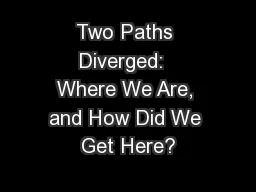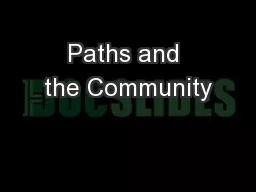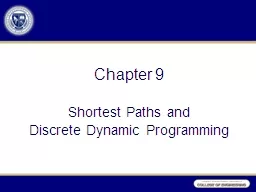PPT-Two Paths Diverged: Where We Are, and How Did We Get Here?
Author : calandra-battersby | Published Date : 2018-03-15
Steve Wolfgang 1236 63 rd Street Downers Grove IL 60516 jswolfgangalumnivanderbiltedu or wolfukyedu Exploring Current Issues Conference 2 October 2017 Christs
Presentation Embed Code
Download Presentation
Download Presentation The PPT/PDF document "Two Paths Diverged: Where We Are, and H..." is the property of its rightful owner. Permission is granted to download and print the materials on this website for personal, non-commercial use only, and to display it on your personal computer provided you do not modify the materials and that you retain all copyright notices contained in the materials. By downloading content from our website, you accept the terms of this agreement.
Two Paths Diverged: Where We Are, and How Did We Get Here?: Transcript
Download Rules Of Document
"Two Paths Diverged: Where We Are, and How Did We Get Here?"The content belongs to its owner. You may download and print it for personal use, without modification, and keep all copyright notices. By downloading, you agree to these terms.
Related Documents













